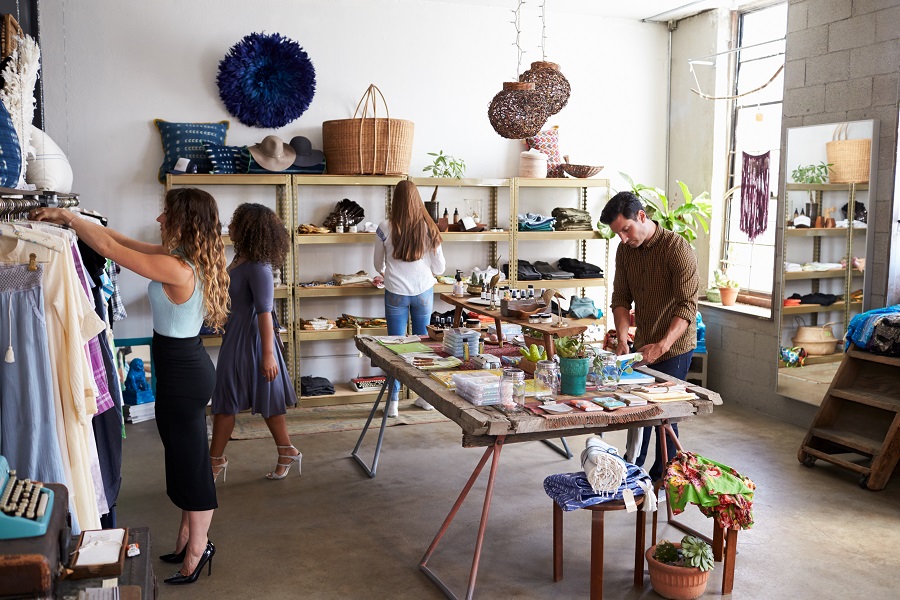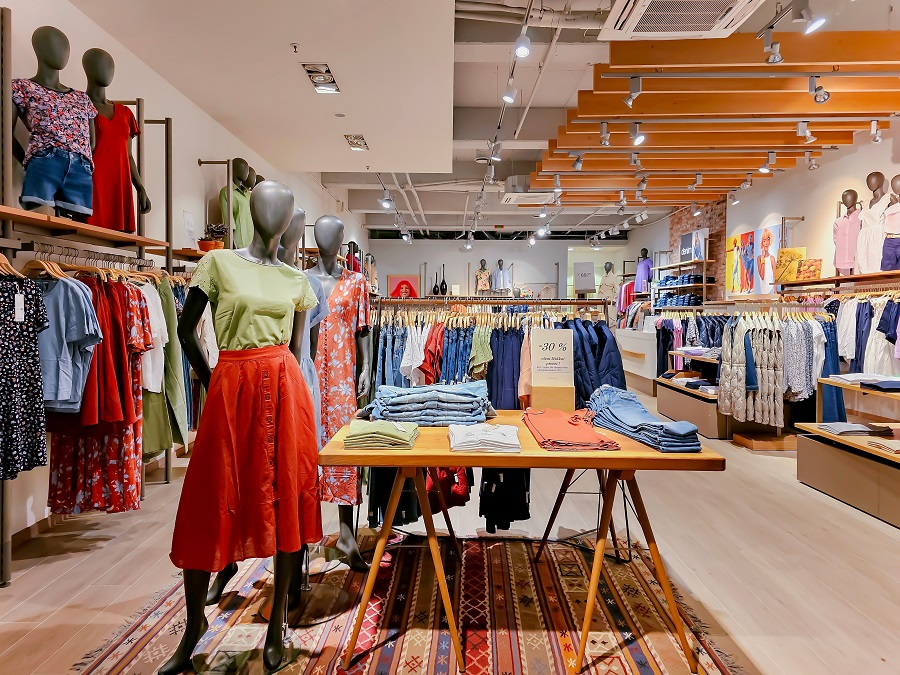20 Jun

While you likely already have a solid product, finding new ways to drive revenue and boost profits is essential for growth. So we will share with you our top 10 easy-yet-effective tips to increase sales in your retail store. Some of these might seem obvious but even the simplest changes can make a big impact on the bottom line. Whether you’re just starting your retail journey or looking for ways to optimize an existing business, these strategies will help give your sales that extra boost. Let’s jump right into the first tip…
1. Focus on the customer experience
Make every customer feel valued and seen. That’s the key to any great customer experience and the best way to increase sales. Customers want to feel appreciated for their business and like someone is paying attention to their needs. So greet customers with a smile as they walk in. Make eye contact and acknowledge them. Get to know regular customers by name and ask about their families. If a customer has an issue, resolve it promptly and apologize wholeheartedly. Offer extras like gift-wrapping purchases for free or recommendations for similar products they might like. Listen carefully to any feedback customers offer and take it to heart.
Every small act of caring and customizing the experience for that individual shopper will build loyalty and iteration and make them want to return again and again – which is exactly how you increase sales long-term!
2. Showcase new items

Putting new products on display is a simple but effective tactic. Whenever possible, make a big showcase of your latest arrivals to drum up interest:
- Feature displays. Dedicate an area of your store, even if small, too new product arrivals. Use visible signage that clearly states “New Items” or “Latest Styles”. Group related new products together to create eye-catching displays.
- End caps. If your store has end-of-aisle displays, utilize those high-traffic areas for new items. Change out the products on these displays frequently to maintain a “new” vibe.
- Make it visual. Use vivid colors, different textures and sizes, and unique product designs for your new item displays. The more visually appealing, the more likely customers will stop to browse.
- Pair with promotions. Run sales or offer special coupons for your new arrivals to encourage customers to try something new. Even a simple 10-20% off sign can prompt buys.
- Advertise online. Promote your latest new retail selections on your website, social media pages, and email newsletters. Include photos to build excitement before customers even step foot in your store.
3. Run compelling promotions
Promotions give customers an incentive to make a purchase now rather than later. Run compelling promotions that offer something unique to catch people’s attention. Here are some tips on what to do to increase retail sales:
- Offer exclusive discounts. Send discount coupons or host flash sales for your loyal customers through your email list. Nothing beats an exclusive discount to get people to pull the trigger and buy. Try offering 20-30% off for new or returning customers through emails or text messages.
- Hold seasonal sales. Host big seasonal promotions during holidays and festivals. People are more willing to splurge during these times so offering sales and gift sets can capitalize on that spending mood. Run a back-to-school sale, Black Friday offers Christmas discounts, etc. Go all out with festive decor, thematic gift bundles, and deep discounts during these periods.
- Launch gift-with-purchase offers. Include a free gift when customers buy certain products. It could be a free tote bag with a minimum purchase, free makeup samples with cosmetics, or a free electronics accessory with electronics. Make the free gift desirable enough to entice people to make that qualifying purchase.
- Organize contests and giveaways. Run contests on your social media where customers can win prizes by tagging friends, sharing posts, or answering questions. Give away free products through lucky draws to incentivize people to follow your store’s social profiles and spread the word.
4. Optimize your store layout
Your store layout can either enhance or hinder sales. Arrange your store in a way that makes it easy for customers to shop. A well-organized layout can greatly improve your sales, so take some time to optimize the flow of your store.
- Make clear routes through your store. Customers should have a logical path to walk from one area to another without doubling back. Place similar products near each other to create a smooth shopping experience. Customize the route to guide customers past high-margin or high-traffic items that you want to promote. Use wide aisles that allow two-way foot traffic and make it easy for shoppers to browse and relax.
- Remove clutter and obstacles. Remove stacks of boxes and items that are just lying around. Get rid of any obstacles that block customers’ paths. People want to see clearly where they are walking and what products are available. A messy, cluttered store sends a subconscious message that you don’t pay attention to the small details, affecting customers’ perceptions and purchase decisions.
- Keep high-demand products visible. Place frequently bought staple items or bestsellers in prominent locations where customers will see them right away. Put new arrivals or sale items at the store entrance, ends of aisles, or check-out counters so people pass right by them. Give premium brands a display of their own in a high-traffic area. This simple placement of the right products can have a big impact on the number of units you sell.
5. Cross-promote related products
Whenever a customer shows interest in one product, show them related products that complement it. This tactic works especially well for retailers that sell clusters of complimentary items. For example, if a customer is shopping for a toaster, recommend toaster oven pan sets, muffin trays, or cookbooks with toaster oven recipes. Upsell customers by displaying similar yet enhanced versions of the product they’re considering. Recommend an upgraded toaster model with additional features.
Take advantage of the moment when a customer is already thinking about a similar product category. They are primed and ready to make another purchase. Cross-promoting relevant items at checkout counters, cash registers, and end caps can be highly effective in getting impulse buys. Don’t overwhelm customers with too many options though. Carefully select three to five complementary products that clearly tie in. Well-placed and targeted cross-promotions can boost the average sale and increase both unit and dollar sales.
6. Offer diversified product lines

Your customers want choices! Don’t limit yourself to one or two types of products. Expand and diversify your offerings. The more options you provide, the more likely customers are to find something that meets their specific needs and budgets.
Here are some ways to increase sales:
- Think beyond your current niche. If you currently sell only men’s clothing, for example, consider starting a women’s line or adding a kids’ section. This allows you to tap into a bigger market.
- Add complementary products. If you sell electronics, sell accessories like cables, chargers, and headphones along with it. This creates more opportunities for an upsell.
- Partner with other brands. Work with complementary product brands to expand your range. For instance, an accessories store can partner with clothing brands to offer complete outfits. This strengthens your value proposition to customers.
- Offer multiple price points. Don’t focus on just luxury or bargain products. Carry items at various price levels to appeal to different budget segments. This has the potential to increase both unit sales and total revenue.
7. Improve product assortments
An outdated or limited product selection simply won’t cut it these days. You want products that your customers are looking for and will get excited about. So evaluate and update your product assortments regularly.
Take a close look at what’s selling and what’s not. Figure out why some items are flying off the shelves while others are collecting dust. Listen to customer and employee feedback to identify gaps in your current selection. Then search for in-demand products you can add. Pay attention to the latest trends and how competitors are faring with new offerings. Stay ahead of the curve to keep attracting shoppers.
When bringing in new items, think of variety. Don’t just add similar products. Get creative and expand your selection into new categories, styles, colors, sizes, and price points. The wider your range, the more customers you can attract and the more often they’ll come back for what they can’t find elsewhere.
Finally, make room for those new products by removing slow sellers or out-of-date stock. Nothing signals “staleness” quite like a collection dominated by the same dusty items customers have ignored for years. A fresh and continuously evolving selection says you’re an authority, in the know, and willing to adapt to what customers really want. So give your assortment a regular overhaul to improve sales and shopper satisfaction. After all, you can’t sell what you don’t have – so make sure you have the right stuff.
8. Expand online and mobile sales channels

Today’s customers expect to be able to shop whenever and however, they want – whether that’s in your store, on your website from a computer, or through an app on their phone. Having an engaging, user-friendly website and mobile app allows you to reach more customers beyond your physical store and ultimately helps in retail store marketing.
If you don’t already have an e-commerce store set up, make that a top priority. Make it easy for customers to browse your products, see detailed information, read reviews, and make purchases with just a few clicks. Invest in good quality product images that showcase your items well on screen. And offer convenient shipping options at reasonable rates.
Once you have your basic website in place, find ways to improve the customer experience. Add new features like personalized recommendations, targeted promotions, and live chat support. Monitor your website analytics to see which pages and products are most popular and where customers get stuck. Then make adjustments to boost conversions.
For mobile users, a responsive website that works well on any device is the minimum. But ideally, create a dedicated retail app to give customers a more personalized, native experience. Allow users to create favorite lists, access their order history, track loyalty points, and get product recommendations and notifications. The app can extend your brand beyond just performing transactions and help foster ongoing customer relationships.
9. Listen to customer feedback
Listen closely to your customers— they always have valuable insight. Whether it’s an in-person conversation at your shop or an online review, take the time to read and respond to feedback. Customers want to know that their opinion matters and that you’re actively working to improve based on their suggestions.
Make it easy for customers to give you feedback by having comment cards in your store, online review forms, and social media channels. Then actually implement good suggestions where possible. Simple things like changing store hours based on customer demand or stocking a particular product that customers requested can go a long way.
Your customers are your most important asset. They help spread the word about your business through their recommendations and reviews. So put yourself in their shoes and think about the experience they have shopping at your store. What could be improved? What do they really value? Ask them directly through surveys and focus groups. Then make the changes that will really resonate with your target audience.
10. Recognize and reward employees
Your employees are your biggest assets when it comes to knowing how to increase sales in retail. Showing your appreciation for their hard work and motivating them to go the extra mile really pays off. Some simple ways to recognize and reward good performance are:
- Give verbal praise publicly. When an employee helps a customer well or has great sales numbers for the week, thank them in front of other staff. A simple “good job!” and an explanation of why you appreciate them goes a long way. Public recognition can motivate others to perform at that level too.
- Offer small weekly or monthly bonuses. Even a $25 bonus for “employee of the week” chosen based on things like customer feedback, sales numbers, and positive attitude shows employees that their efforts make a difference. A small cash bonus can be highly motivating.
- Provide fun non-cash rewards. Gift cards, extra time off, lunch with the manager — these types of rewards cost little but let employees know you notice their contributions. Even handing out chocolate bars or coffee shop gift cards on the spot for going “above and beyond” can be surprisingly motivating.
- Hold annual recognition ceremonies. Host an end-of-year party and hand out certificates, gift baskets, or extra paid time off to your top sales performers and model employees. Publicly announcing the award winners in front of all staff and their families shows how much you value their excellence.
In today’s competitive retail landscape, retailers need every advantage they can find to increase sales and customer satisfaction. Upgrading your retail POS system with a powerful yet user-friendly solution like Hana Retail can dramatically improve the shopping experience for your customers while also boosting efficiency and insights for your staff. Sign up for FREE to start with the point of sale for small retail business today!





